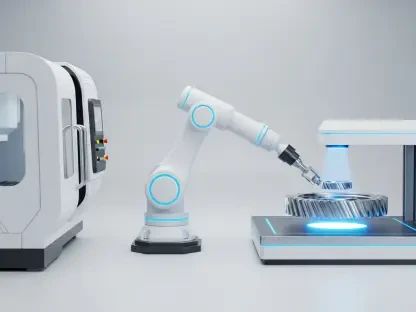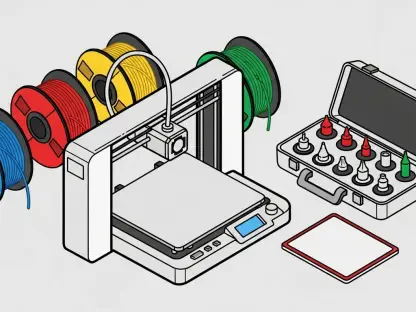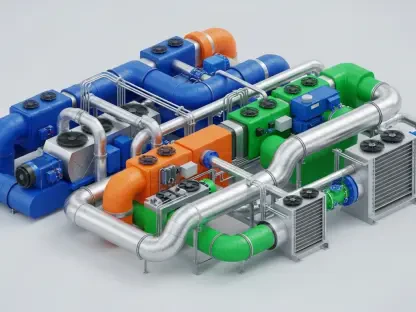The increasing demand for high-performance materials in manufacturing is driving advancements in alloy technology, with niobium alloys emerging as key players. Industries such as aerospace and automotive are turning toward more robust solutions, sparking significant interest in niobium-based alloys. This direction underscores the alloy’s potential to revolutionize manufacturing practices by offering enhanced material properties that meet stringent industry demands. This review delves into the evolving landscape of niobium alloys, assessing their features, performance, and role in shaping modern manufacturing.
Understanding Niobium Alloys and Their Emergence
Niobium alloys, composed of niobium with elements like zirconium and titanium, are renowned for their unique capabilities. They have gained prominence due to their high melting points, excellent corrosion resistance, and superconductivity, essential attributes in demanding environments. These properties make them suitable for applications that necessitate durability and high performance. The adoption of niobium alloys in manufacturing reflects a paradigm shift in materials engineering, highlighting their potential to address complex engineering challenges in various high-tech industries.
Over time, niobium’s strategic relevance in manufacturing has grown, spurred by its adaptability to diverse industrial needs. With a significant presence in sectors such as energy, medical devices, and infrastructure, the alloy’s versatility is clear. The growing emphasis on sustainable practices and innovative engineering solutions further elevates niobium’s status as a transformative element in the industry. The alloy’s integration into modern technology underscores its pivotal role in advancing industrial processes.
Analyzing Key Features of Niobium Alloys
High-Temperature Resistance
Niobium alloys are particularly noted for their exceptional high-temperature resistance, a quality paramount in industries like aerospace and automotive. These sectors require materials that can withstand extreme conditions without compromising safety or performance. Niobium alloys provide a solution by maintaining structural integrity and reliability at elevated temperatures, making them indispensable in the creation of advanced components used in space exploration and high-speed travel.
Corrosion Resistance
Beyond their temperature resilience, niobium alloys boast robust corrosion resistance, an important factor in extending the lifespan of industrial components. This property is critical in environments exposed to oxidizing and corrosive conditions, such as chemical processing and marine applications. The alloy’s ability to resist degradation translates into longer-lasting, lower-maintenance products, offering significant cost savings and operational efficiencies over time.
Recent Developments and Industry Trends
Niobium alloy innovations have accelerated, with ongoing research yielding novel forms and applications. The trend toward miniaturization and increased performance in electronics and machinery has spurred advancements in niobium-based materials. Notably, partnerships between industry leaders further bolster these trends, facilitating strategic initiatives aimed at expanding niobium alloy accessibility and enhancing their application scope.
Industry behavior shifts have also significantly impacted niobium alloy development. There is a clear inclination toward sustainable and energy-efficient manufacturing processes. As environmental regulations tighten, the focus on materials that reduce carbon footprints becomes even more crucial. Niobium’s potential to support these initiatives aligns with broader industry movements, embedding its role in future manufacturing innovations.
Real-World Applications of Niobium Alloys
Niobium alloys are seeing increasing utilization across various high-tech domains. In the aerospace industry, the alloy’s strength-to-weight ratio is harnessed to create lighter, more efficient engines and structural components. The automotive sector benefits similarly, with niobium’s resilience contributing to the development of cutting-edge brake systems and exhaust manifolds. Additionally, in additive manufacturing, specialized niobium powders are enabling complex, high-performance part fabrication.
Beyond these sectors, niobium alloys are gaining traction in electronics, medical devices, and energy sectors. Their unique properties support the production of superconducting materials for advanced computing and power generation systems. This diversity in application not only highlights niobium’s versatility but also its crucial role in powering modern technological advancements and efficiencies.
Addressing Challenges in Niobium Alloy Utilization
Despite their advantages, challenges persist in the widespread adoption of niobium alloys. Technical hurdles, such as fabrication complexities and cost considerations, can pose significant barriers. Additionally, market dynamics, including supply chain constraints and geopolitical factors, may impact availability and pricing, affecting the material’s accessibility to manufacturers worldwide.
Efforts to overcome these challenges are ongoing, with initiatives focused on optimizing production processes and addressing regulatory standards. Collaboration between suppliers and manufacturers is crucial to building resilient supply chains capable of meeting demand. By prioritizing sustainable sourcing and production methods, the industry can alleviate some of the pressures hindering niobium alloy proliferation and capitalize on its potential benefits.
Looking Ahead: The Future of Niobium Alloys
The future of niobium alloys in manufacturing is poised for exciting developments with emerging technologies. As research continues to push the boundaries of material science, breakthroughs in niobium alloy formulations are expected to enhance applications, including green energy solutions and smart manufacturing systems. These advancements will likely reinforce niobium’s standing in sectors that demand high precision, efficiency, and robustness.
Moreover, the long-term impact of niobium alloys on manufacturing and society could be profound. By supporting innovative industrial processes, niobium alloys offer pathways to more sustainable and efficient production systems. The ability to meet evolving technological needs without sacrificing environmental integrity will be integral to shaping future industrial landscapes.
Key Insights and Implications
This review underscores the transformative role of niobium-based alloys in modern manufacturing. Their unique properties, including high-temperature and corrosion resistance, position them as valuable assets in numerous high-tech sectors. Despite challenges in adoption, ongoing advancements and collaborations highlight the alloy’s potential for broader application and innovation. Future developments in niobium alloy technology promise to bolster its influence, driving enhanced performance in manufacturing processes. Such insights demonstrate the alloy’s ability to meet industry demands, affirming its importance in future technological progress.









